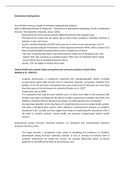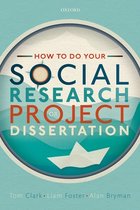Summary
Summary How to do your Social Research Project or Dissertation, ISBN: 9780198811060 education
- Module
- Education
- Institution
- The University Of Strathclyde (UOS)
Summary study book How to do your Social Research Project or Dissertation of Tom Clark, Liam Foster (6) - ISBN: 9780198811060 (notes)
[Show more]




